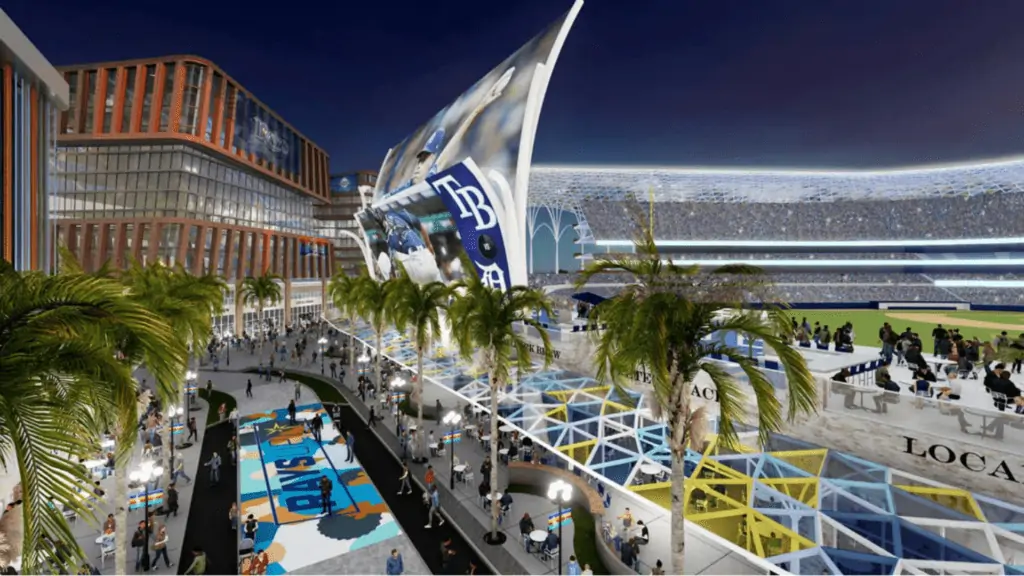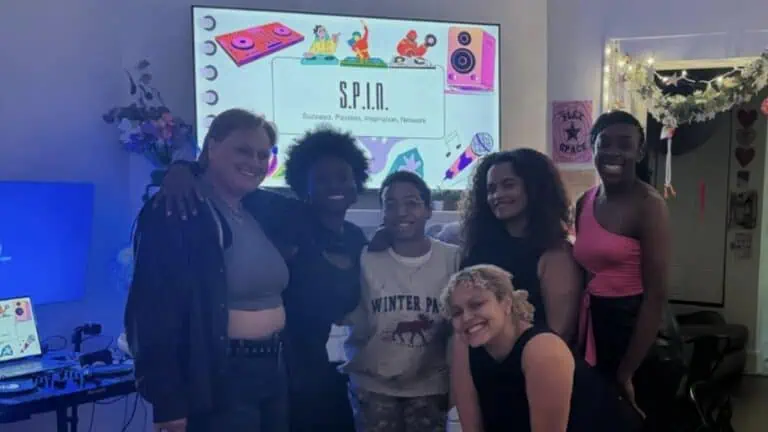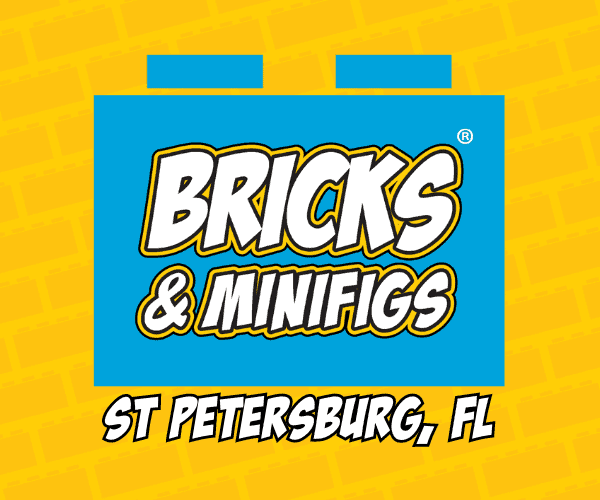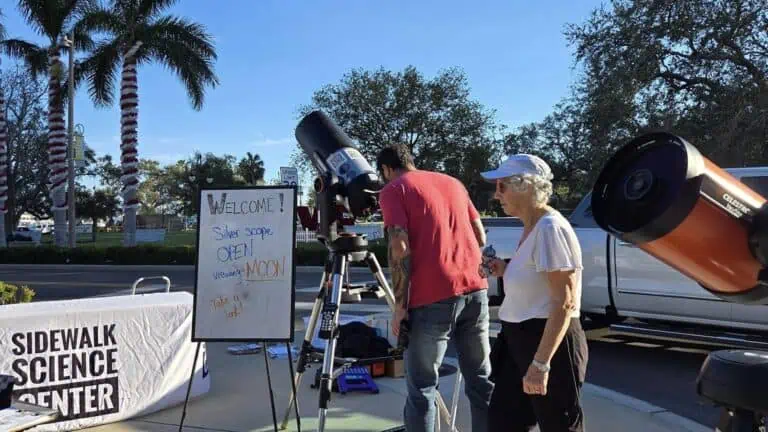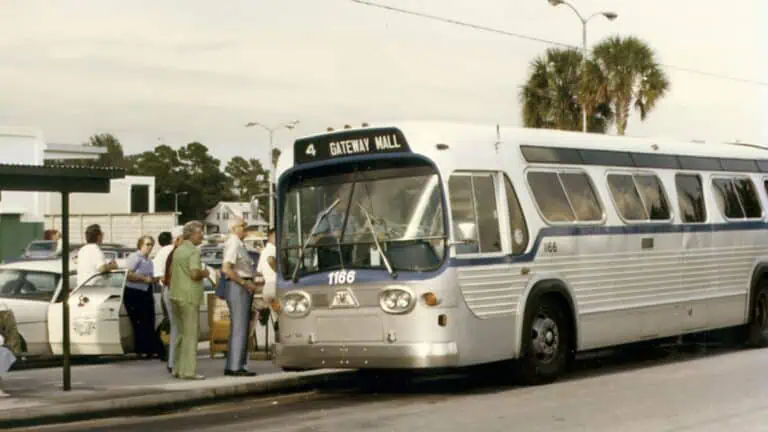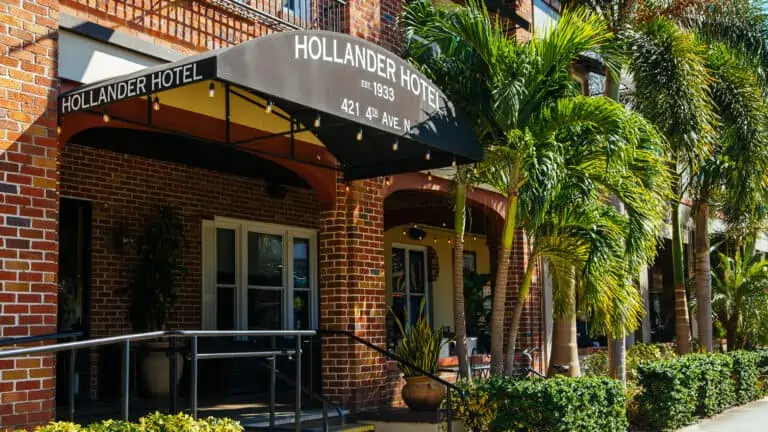After St. Pete Mayor Ken Welch announced a new request for proposals (RFP) for redevelopment of the Historic Gas Plant District and Tropicana Field location, the city announced that four proposals were submitted for consideration. They can all be viewed online here, and the city has allocated six locations for locals to share feedback ahead of Welch’s decision coming at the end of January.
Of the four groups to submit a proposal for the 86-acre development project, all but one is a newcomer. Sugar Hill Community Partners, which was a finalist in the original RFP and has garnered support locally, significantly “beefed up” their new proposal, and they are the only developers from the first round to re-submit in round two. The three newcomers are 50 Plus 1 Sports, Restoration Associates, and a joint proposal by the Tampa Bay Rays and Hines Interests Limited Partnership.
ADVERTISEMENT
The proposal put forth by Hines and the Rays is of particular interest. Previously, the Rays had not been a partner in any proposal, and in fact, the plans submitted originally by each developer didn’t even include a stadium for the team. Including a Rays stadium in the plans was a new requirement in Welch’s updated RFP, and it appears the club has decided to get fully involved in the entire redevelopment project.
Certainly, the question must be asked how the Rays’ involvement as a potential developer affects the selection process, particularly as the organization has not yet committed to staying in St. Pete (and reportedly is still in talks with the City of Tampa). Could the Rays opt to leave if they’re not selected? Would selecting them guarantee that they stay? The fact that Rays co-President Brian Auld led the public presentation of their proposal (as opposed to someone from Hines) speaks volumes.
Here’s a brief synopsis of all four proposals.
Hines and the Tampa Bay Rays
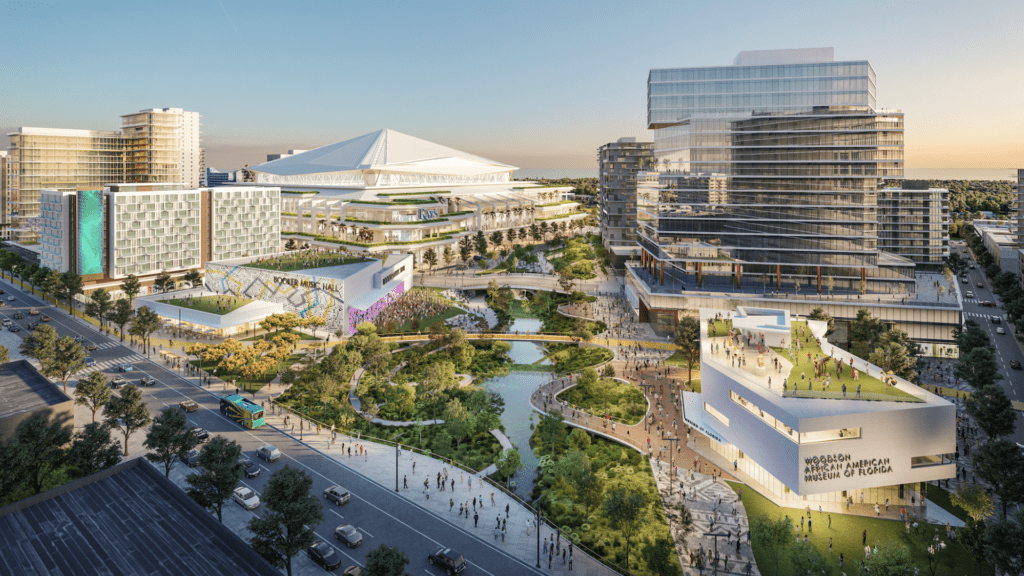
Hines is a privately owned global real estate investment, development and management firm with a presence in 314 cities in 28 countries, and $92.3 billion of investment assets under their management. The company is certainly experienced in development, and their partnership with the Rays would give the ballclub an opportunity to do what many other pro teams have done: take ownership – and reap the financial benefits – of the community surrounding its stadium.
The joint proposal calls for a state-of-the-art new indoor/outdoor stadium for the Rays, as well as 20 new city blocks, 5,700 multifamily units, 1.4 million square feet of office, 300,000 square feet of retail, 700 hotel rooms, 600 senior living residences, a 2,500 person entertainment venue, and various civic uses. An announcement was released detailing the Hines-Rays proposal, which included $50 million going to intentional equity initiatives in St. Pete “that will support and uplift historically disadvantaged populations.”
Their announcement said that around 850 of its units would be set aside for affordable and workforce housing, while the organizations would commit to improving or building another 600 affordable/workforce housing units elsewhere in St. Pete. Plans also include a new building for the Woodson African American Museum.
Sugar Hill Community Partners
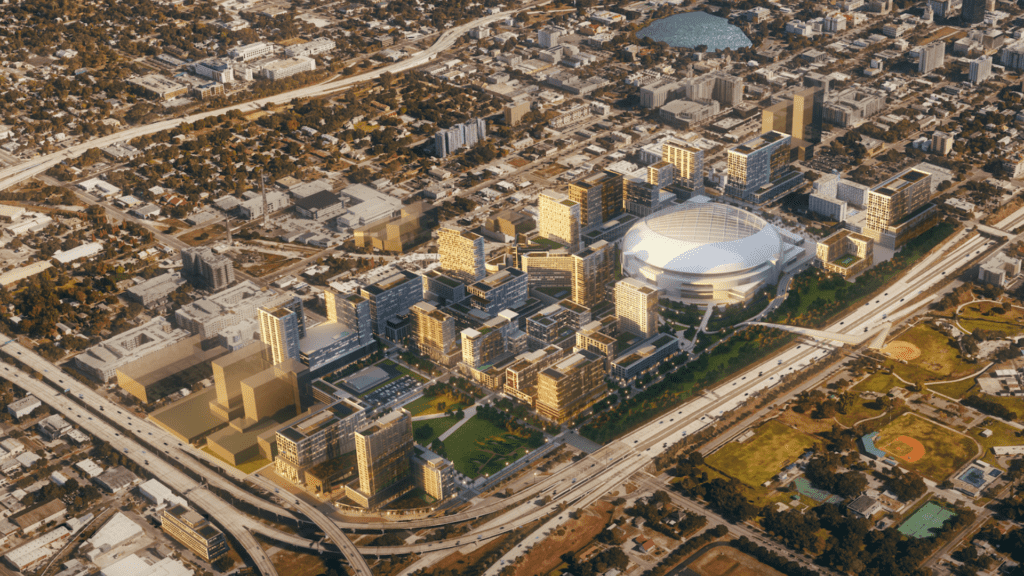
Beyond the new requirement for a stadium, the other side of Welch’s vision for the development is the renewed focus on equitable access to housing, and affordable and workforce housing, while honoring the history – and the city’s broken promises – of the once thriving Gas Plant community.
Sugar Hill Community Partners held a meet-and-greet with media following the submission deadline, and made clear that those two factors are a huge part of their plan. Master Developer and Sugar Hill Principal Kevin Johnson shared some of the updates in their plan, which included a significantly expanded team within St. Petersburg, from government and private business entities, to cultural leaders and community development consultants.
Of note, the Sugar Hill plan now calls for even more affordable and workforce housing units in the development (a number estimated to be more than 3,000; more than 50 percent of the total units), as part of a mixed-income plan for the residential portion of the community. Sugar Hill has also placed a strong emphasis on ensuring that it not only supports St. Pete’s booming art scene, but helps it expand.
Sugar Hill has certainly done its due diligence in engaging the community, and has brought a large number of local leaders onto their side. They were considered by many to be the favorite when the new RFP was announced back in the summer, and they have expressed an openness to working either jointly or alongside the Rays for the new stadium, depending what the club prefers.
50 Plus 1 Sports
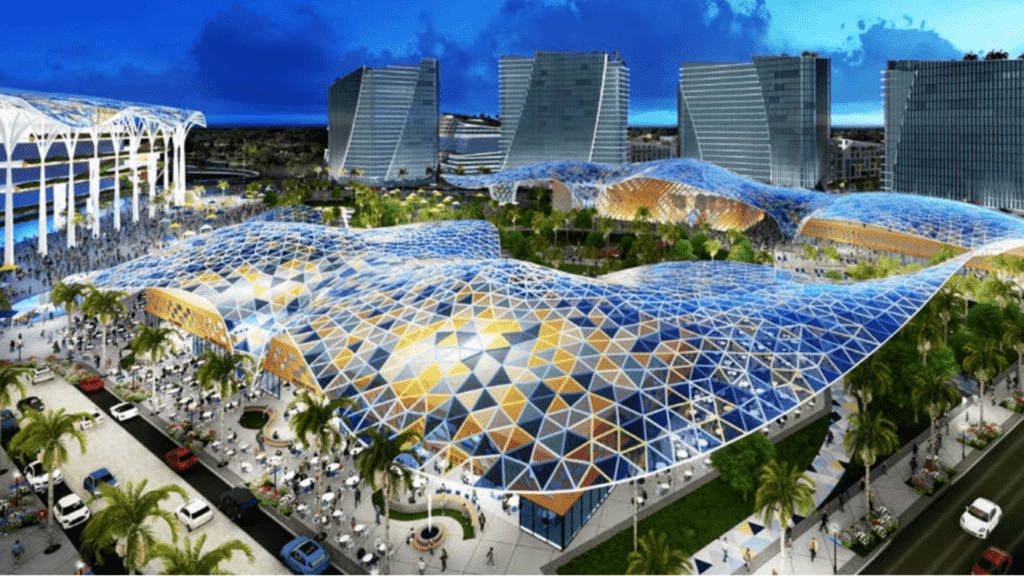
The group came in as a bit of an unknown locally, but the team put together by 50 Plus 1 Sports is certainly an impressive one, particularly with global firms like AECOM and JLL on board, and dozens of America’s top athletic stadiums and arenas in the collective portfolio. 50 Plus 1’s overall design was inspired by a ray swimming through the ocean, though their proposal is far deeper than aesthetics.
Their proposal stands out in its commitment to community ownership of the property, particularly with the plan for a 99-year lease (leaving the property in city ownership) rather than giving developers ownership of the property. 50 Plus 1 also has a strong commitment to creating jobs, both temporary and permanent, for women and minorities, with a requirement of 50 percent minority and women participation in every project.
The proposal calls for 6,748 units of housing, 50 percent of which would be workforce. Additionally, they are proposing 1.4 million square feet of office space, 450,000 square feet of retail space, and multiple hotels totaling 773 rooms. 50 Plus 1 Sports is one of the country’s fastest-growing professional sports stadium and mixed-use developers.
Restoration Associates
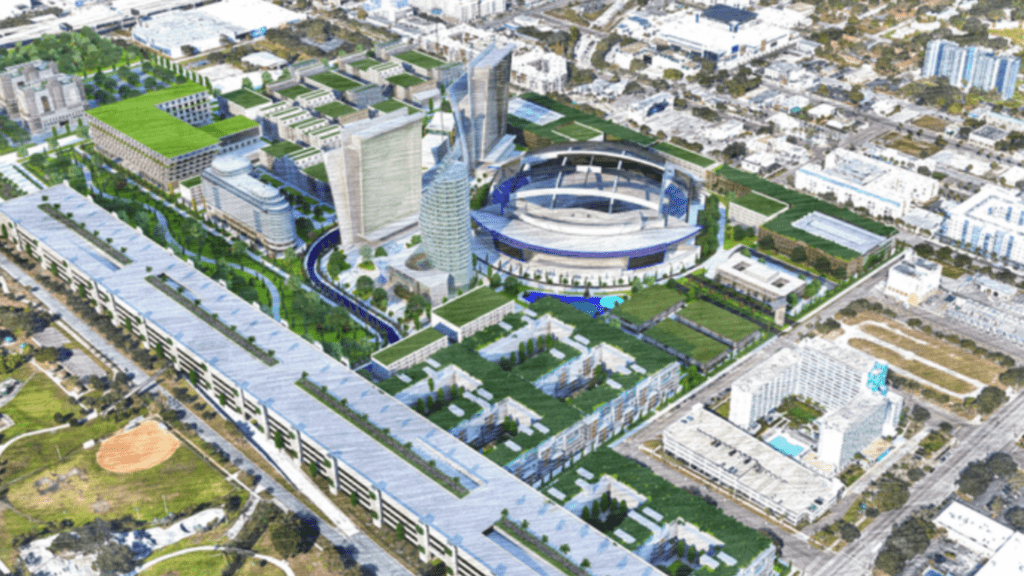
With each proposal having at least one item that stands out above its competitors, the locally-run Restoration Associates has emphasized the importance of transit, parking and sustainability within its plan. Those items haven’t necessarily been overlooked by others, but they haven’t been a point of emphasis, either.
Aided by their local knowledge (Restoration Associates was in St. Pete and submitting proposals for this redevelopment more than a decade ago), the group recognizes the need for connectivity in and throughout the city. As such, their plan includes a massive transit hub on 1st Avenue South they envision being connected to public and private transit throughout Tampa Bay, as well as parking garages on site.
Beyond that, Restoration Associates is proposing 1,000 workforce housing units in their plan, as well as a new location for The Woodson and a Gas Plant Memorial Park. While the group submitted two plans for a Rays stadium (one for a new stadium with a retractable roof, another for heavy remodeling and upgrades of the current stadium), they emphasized that stadium development is on the Rays, though they would work closely with them with the adjoining construction.
—
For more background on the development, check out our story from August about what the new RFP included, and our story from June on why Welch chose to restart the RFP process.
ADVERTISEMENT




